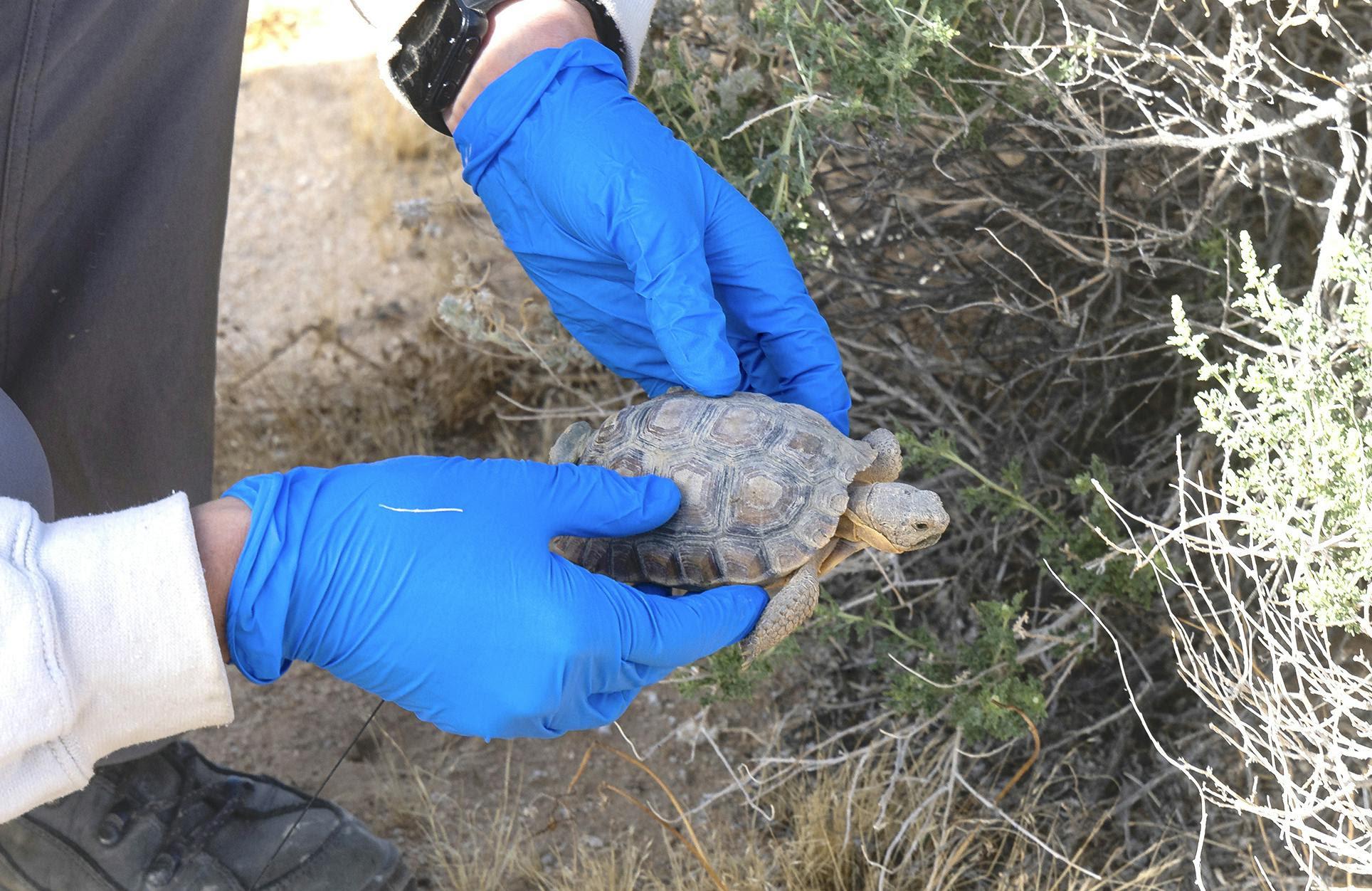70 Critically Endangered Tortoises Are Thriving in the Wild 6 Months After Their Release
The group of young tortoises spent their early life in a headstart program operated by the San Diego Zoo Wildlife Alliance and The Living Desert Zoo and Gardens
Seventy critically endangered Mojave desert tortoises are bringing hope to their threatened species.
Six months ago, San Diego Zoo Wildlife Alliance (SDWZA) and The Living Desert Zoo and Gardens reintroduced 70 young tortoises to their native habitat, the Mojave Desert. In partnership with Edwards Air Force Base, the U.S. Fish and Wildlife Service, and the U.S. Geological Survey, the zoos released the reptiles near the Edwards Air Force Base in Southern California.
:max_bytes(150000):strip_icc():focal(749x0:751x2):format(webp)/rare-tortoise-thriving-after-release-041624-4-86fcf3458e13456d8fb624684672f03d.jpg)
SAN DIEGO ZOO WILDLIFE ALLIANCE
Wildlife experts were hopeful that the tortoises — the first in a headstart program to return to the wild after receiving a combination of indoor and outdoor rearing assistance from professional animal caretakers — would thrive in the wilderness because the reptiles exhibited positive natural behaviors, like constructing new burrows, shortly after their release.
The tortoises have proved the experts right; the reptiles have survived their first winter six months after returning to the desert and are emerging from their self-constructed burrows, according to the SDWZA.
:max_bytes(150000):strip_icc():focal(749x0:751x2):format(webp)/rare-tortoise-thriving-after-release-041624-6-b170831fb38243a19e1c5c84dd75efd9.jpg)
SAN DIEGO ZOO WILDLIFE ALLIANCE
"We've worked so hard to get here, and we've been through so much together," Melissa Merrick, Ph.D., the associate director of recovery ecology at the SDZWA, said in a statement. "We've had to re-strategize, switch plans, react, and adapt to so many emerging situations, and we've all done it successfully to get to this point."
This good news is especially welcome as conservationists prepare the second group of tortoises for their return to the wild.
"The second group of young headstart tortoises just arrived from The Living Desert and will spend the next six months with us before joining their predecessors in the wild. It's an exciting time for the program," Merrick added.
:max_bytes(150000):strip_icc():focal(749x0:751x2):format(webp)/rare-tortoise-thriving-after-release-041624-5-1f3a2391215343249a7902508a39026f.jpg)
SAN DIEGO ZOO WILDLIFE ALLIANCE
The headstart program that led to the 70 tortoises's success started with adult female tortoises laying eggs in human care. After the eggs hatched, the hatchlings were "reared indoors at The Living Desert for six months, and then in a protected outdoor environment at Edwards Air Force Base" before experts released the animals into the wild, per a release from the SDWZA.
Scientists believe that giving these young tortoises time to grow and learn in a protected environment will provide the species with a better chance at survival. The first group of 70 tortoises to graduate from the program seems to be bearing out this hypothesis.
"Indoor rearing at The Living Desert enables the tortoises to grow to three to five times the size they would at this stage in their native habitat, making them less vulnerable to predation," the SDWZA shared.
:max_bytes(150000):strip_icc():focal(750x129:752x131):format(webp)/rare-tortoise-thriving-after-release-041624-1-b6fb8273302f4a73a37efc6c1d010a93.jpg)
A young desert tortoise during the indoor-rearing phase of the San Diego Wildlife Alliance and The Living Zoo's headstart program.
SAN DIEGO ZOO WILDLIFE ALLIANCE
Predation is a serious concern for these endangered desert tortoises, which is why scientists created a headstart program for them.
"Our headstarting program is essential for maximizing the success of young tortoises as we release them into the wild," James Danoff-Burg, Ph.D., the director of conservation at The Living Desert Zoo and Gardens, said. "Mortality of juvenile desert tortoises is dramatic, often approaching 100% in areas where ravens are overpopulated due to humans providing them food via their open trash containers. The benefits of headstarting are clear when, in only six months, we can get them to the approximate size of a two-and-a-half-year-old tortoise! Larger tortoises are much more resistant to raven and coyote predation than smaller ones."
The Mojave desert tortoise was once common throughout the Mojave and Sonoran deserts of California, Nevada, and Arizona but declined by an estimated 90% in the last 20 years, according to the SDZWA. California's Mojave desert tortoise is categorized as critically endangered on the International Union for Conservation of Nature (IUCN) Red List of Threatened Species due to the threats of habitat loss and fragmentation, disease, human-subsidized predators, and climate change.
:max_bytes(150000):strip_icc():focal(749x0:751x2):format(webp)/rare-tortoise-thriving-after-release-041624-2-00831ee087f04884b757a341b1c0fd4c.jpg)



